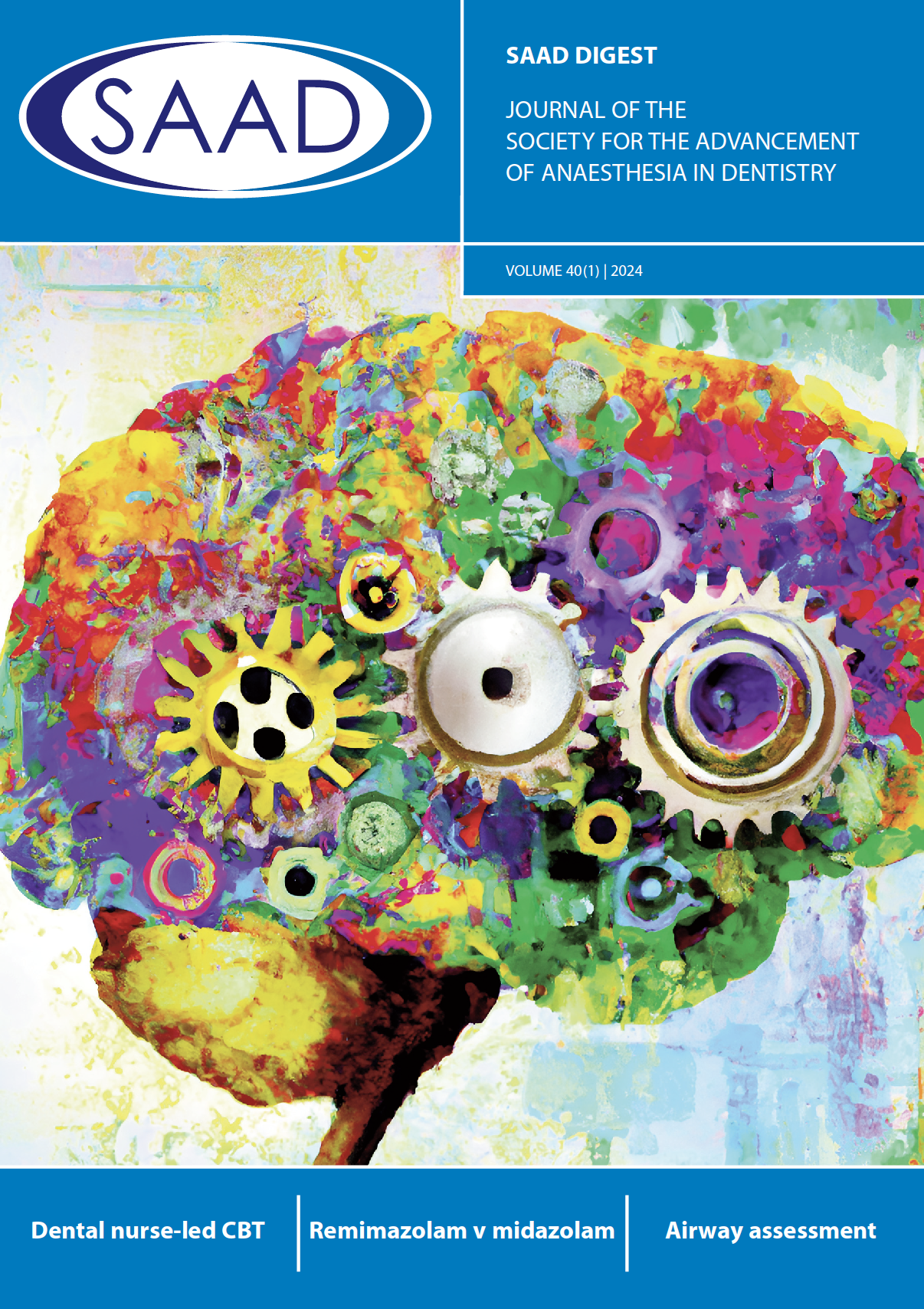
SAAD Digest
March 2024
Volume: 40
Issue: 1
Title: Dexmedetomidine: pharmacology and use as a sedative agent
Author(s): C. Richards
Abstract:
With the recent introduction of remimazolam into conscious sedation for dentistry there is a natural interest in the possibility of other drugs suitable for sedation in the field. This review explores the drug dexmedetomidine, an alpha adrenoceptor agonist first approved for use in intensive care units for short term sedation on intubated patients. It has sedative, analgesic, anxiolytic and antihypertensive properties. Interest was first sparked in dexmedetomidine as it was merited for having minimal impact on respiration, in comparison to midazolam which causes respiratory depression.
This review explores the literature of the pharmacodynamic and pharmacokinetic properties, followed by evaluation of the five available randomised control trials in the literature that compare midazolam with dexmedetomidine for procedural sedation in dentistry.
Overall, although dexmedetomidine seems to be associated with improved patient satisfaction and operator satisfaction with patients more relaxed during treatment, the limitations of being unable to use this drug as an operator sedation technique and the potential significant cardiovascular changes mean that dexmedetomidine is unlikely to ever become a drug of choice for intravenous conscious sedation in dentistry.
If you have a query relating to this article please email: digest@saad.org.uk
Articles from Digest 40(1)